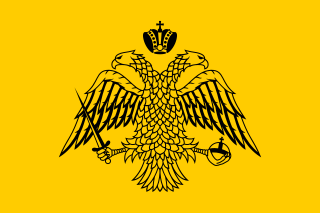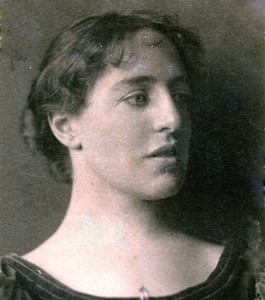Related Research Articles
Aedesius was a Neoplatonist philosopher and mystic. He was born into a wealthy Cappadocian family, but he moved to Syria, where he was apprenticed to Iamblichos. None of his writings have survived, but there is an extant biography by Eunapius, a Greek sophist and historian of the 4th century who wrote a collection of biographies titled Lives of the Sophists. Aedesius's philosophical doctrine was a mixture between Platonism and eclecticism and, according to Eunapius, he differed from Iamblichus on certain points connected with theurgy and magic.

Julian was the Caesar of the West from 355 to 360 and Roman emperor from 361 to 363, as well as a notable philosopher and author in Greek. His rejection of Christianity, and his promotion of Neoplatonic Hellenism in its place, caused him to be remembered as Julian the Apostate in Christian tradition. He is sometimes referred to as Julian the Philosopher.

Eunapius was a Greek sophist, rhetorician, and historian from Sardis in the region of Lydia in Asia Minor. His principal surviving work is the Lives of Philosophers and Sophists, a collection of the biographies of 24 philosophers and sophists.
Chrysanthius of Sardis was a Greek philosopher of the 4th century AD who studied at the school of Iamblichus.

Iamblichus was a Syrian neoplatonic philosopher. He determined a direction later taken by neoplatonism. Iamblichus was also the biographer of the Greek mystic, philosopher, and mathematician Pythagoras. In addition to his philosophical contributions, his Protrepticus is important for the study of the sophists because it preserved about ten pages of an otherwise unknown sophist known as the Anonymus Iamblichi.
Themistius, nicknamed Euphrades, was a statesman, rhetorician and philosopher. He flourished in the reigns of Constantius II, Julian, Jovian, Valens, Gratian and Theodosius I, and he enjoyed the favour of all those emperors, notwithstanding their many differences and the fact that he himself was not a Christian. He was admitted to the senate by Constantius in 355, and he was prefect of Constantinople in 384 on the nomination of Theodosius. Of his many works, thirty-three orations of his have come down to us, as well as various commentaries and epitomes of the works of Aristotle.
Numenius of Apamea was a Greek philosopher, who lived in Rome, and flourished during the latter half of the 2nd century AD. He was a Neopythagorean and forerunner of the Neoplatonists.

Emperor and Galilean is a play written by Henrik Ibsen. Although it is one of the writer's lesser known plays, on several occasions Henrik Ibsen called Emperor and Galilean his major work. Emperor and Galilean is written in two complementary parts with five acts in each part and is Ibsen's longest play.
Eusebius of Myndus was a 4th-century philosopher, a distinguished Neoplatonist. He is described by Eunapius as one of the links in the "Golden Chain" of Neoplatonism.
Prohaeresius was a fourth-century Armenian Christian teacher and rhetorician originally from Caesarea who taught in Athens. He was one of the leading sophists of the era along with Diophantus the Arab and Epiphanius of Syria.
This page is a list of topics in ancient philosophy.
Eustathius of Cappadocia, was a Neoplatonist and Sophist, and a pupil of Iamblichus and Aedesius, who lived at the beginning of the 4th century CE. When Aedesius was obliged to quit Cappadocia, Eustathius was left behind in his place. Eunapius, to whom alone we are indebted for our knowledge of Eustathius, declares that he was the best man and a great orator, whose speech in sweetness equalled the songs of the Sirens. His reputation was so great, that when the Persians besieged Antioch, and the empire was threatened with a war, the emperor Constantius II was prevailed upon to send Eustathius, although he was a pagan, as ambassador to king Shapur II, in 358, who is said to have been quite enchanted by his oratory. His countrymen and friends who longed for his return, sent deputies to him, but he refused to come back to his country on account of certain signs and omens. His wife Sosipatra is said to have even excelled her husband in talent and learning. They had three sons, one of which, Antoninus, also became a philosopher.
Nymphidianus of Smyrna, was a Neoplatonist and sophist who lived in the time of the emperor Julian. He was the brother of Maximus. Julian, who was greatly attached to Maximus, made Nymphidianus his interpreter and Greek secretary, though he was more fit to write declamations and disputations than letters. Eunapius thought that Nymphidianus was a worthy sophist even though he had not been educated at Athens. Nymphidianus survived his brother Maximus, and died at an advanced age.
Sosipatra was a Greek Neoplatonist philosopher and mystic who lived in Ephesus and Pergamon in the first half of the 4th century CE. The story of her life is told in Eunapius' Lives of the Sophists.
Priscus of Epirus, also known as Priscus the Thesprotian and Priscus the Molossian, was a Neoplatonist philosopher and theurgist, a colleague of Maximus of Ephesus, and a friend of the emperor Julian.
Clearchus was a Roman politician who was consul of the Roman Empire in 384 AD.

The Asia Minor Greeks, also known as Asiatic Greeks or Anatolian Greeks, make up the ethnic Greek populations who lived in Asia Minor from the 13th century BC as a result of Greek colonization, up until the forceful population exchange between Greece and Turkey in 1923, though some communities in Asia Minor survive to the present day.

Emily Wilmer Cave Wright was a British-born American classical philologist, and a contributor to the culture and history of medicine. She was a professor at Bryn Mawr College, where she taught Greek. Wright's works include, The Emperor Julian’s relation to the new sophistic and neo-Platonism (1896), A Short History of Greek Literature, from Homer to Julian (1907), Julian (1913–23), Philostratus and Eunapius: The Lives of the Sophists (1922), Against the Galilaeans (1923), Hieronymi Fracastorii de contagione et contagiosis morbis et eorum curatione libri III (1930), and De morbis artificum Bernardini Ramazini diatriba (1940). Giovanni Maria Lancisi: De aneurysmatibus, opus posthumum (1952), and Bernardino Ramazzini: De Morbis Typographorum (1989) were published postmortem.
Diophantus the Arab was an Arab teacher and sophist at Athens during the 4th century AD. His most famous student was Libanius (336–340). He was active during the reign of Julian the Apostate (361–363).
Epiphanius of Petra, also called Epiphanius of Syria, was an Arab sophist and rhetorician at Athens in the first half of the fourth century AD.
References
- Eunapius, Lives of the Sophists
- Filipe Delfim Santos: Maxime (d’Éphèse?), in: Richard Goulet (Hrsg.): Dictionnaire des philosophes antiques, Bd. 4, CNRS, Paris 2005, ISBN 2-271-06386-8, p. 313-322
- Robert J. Penella: Greek Philosophers and Sophists in the Fourth Century A.D. Studies in Eunapius of Sardis, Francis Cairns, Leeds 1990, ISBN 0-905205-79-0
- This article incorporates text from a publication now in the public domain : Chisholm, Hugh, ed. (1911). "Maximus of Smyrna". Encyclopædia Britannica (11th ed.). Cambridge University Press.
- Paola Radici Colace: Le parafrasi bizantine del PERI KATARCHÔN di Massimo. Introduzione, testo critico, traduzione e note di commento linguistico-filologico, Messina, EDAS, 1988.
- Hartmann, Udo (2018). Der spätantike Philosoph. Die Lebenswelten der paganen Gelehrten und ihre hagiographische Ausgestaltung in den Philosophenviten von Porphyrios bis Damaskios [The late antique philosopher. The lifeworlds of pagan scholars and their hagiographic treatment in the philosophical vitae from Porphyrius to Damascius]. 3 volumes. Bonn: Habelt, ISBN 978-3-7749-4172-4, pp. 569–588.